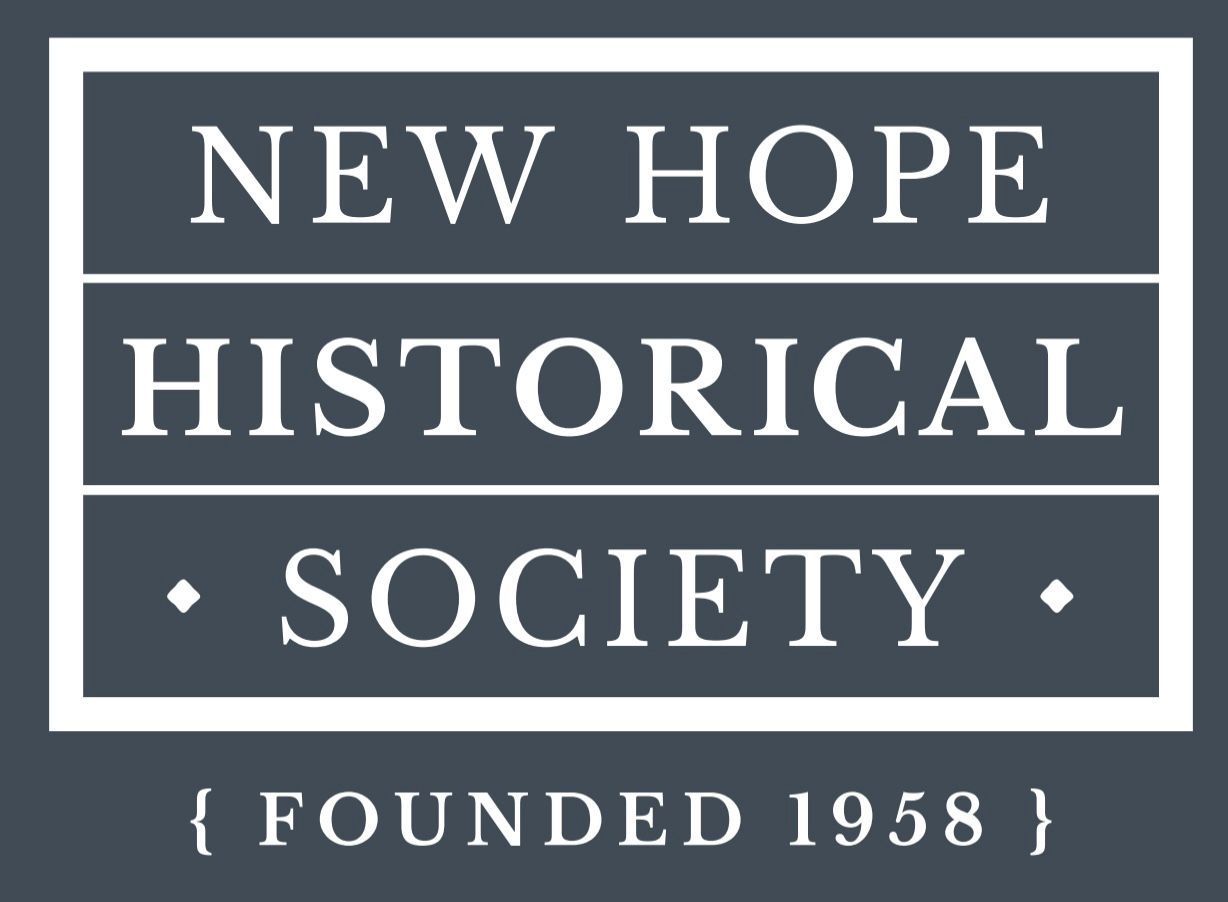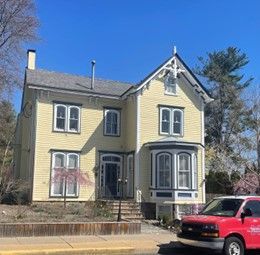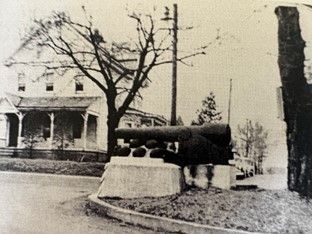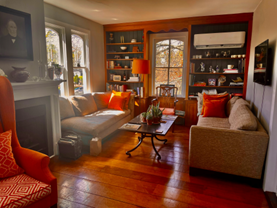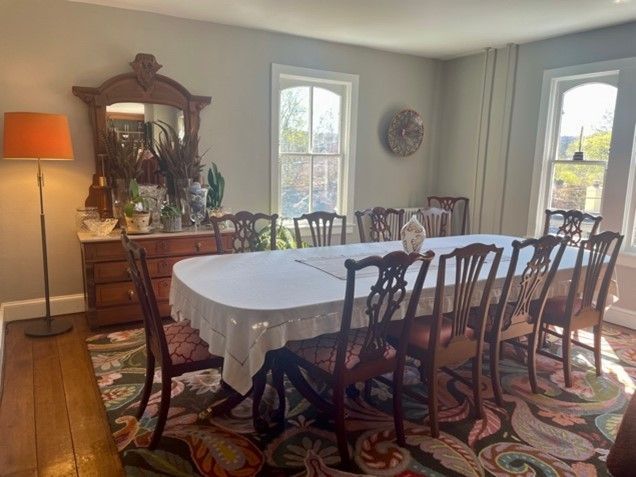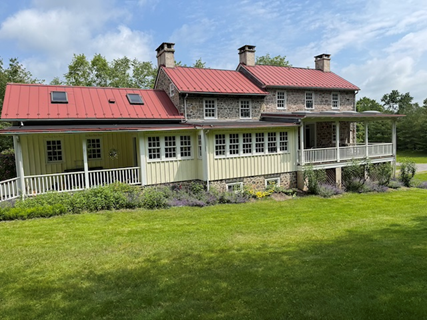Formerly a Doctor’s Office, Now a Bed and Breakfast- The Aaron Burr House
The Aaron Burr House, 80 W. Bridge St., today.
May 19, 2025
New Hope Historical Society (NHHS) volunteers recently visited The Aaron Burr House, at 80 West Bridge Street. This historic property has had several uses over the years, including doctor’s office, dentist’s office, personal residence, and bed and breakfast.
Records in the NHHS archives indicate the current structure was not present in the 1850 atlas, and was built in 1873 on land that was once part of the large Paxson estate. That estate once extended from Bridge Street north to Rabbit Run (where North Main Street crosses the Delaware Canal) and all the way east to the Delaware River from where the high school is situated today. The 1873 building was built directly across Chestnut street from the famed Washington Chestnut tree, where legend has it that George Washington tied up his horse at the time of the Battle of Trenton. The tree and Washington were famously depicted years afterward by New Hope folk artist Joseph Pickett in his work “Washington under the Council Tree.” Pickett’s art now hangs in the Museum of Modern Art and other museums. The tree stood until 1893.
NHHS archives show the second owner was J. Ernest Scott, MD and wife Elizabeth Scott starting in 1902. In a 1979 entry to the files, prolific archivist Ann Niessen adds: “The New Hope News for July 5, 1907 tells us that Dr. Scott chaired a movement to have two cannons placed at 2 of the 3 known redoubt sites in the Borough during the American Revolution. Dr. Scott spoke at the prestigious dedication ceremonies for this event. Those residents of New Hope who remember the cannon in front of Dr. Scott’s house tell us it was cast of solid bronze.” The cannon at the corner of Bridge and Ferry Streets was removed “sometime after the Second World War” per Niessen.
Searches continue for documentation relating to Aaron Burr and a New Hope connection. Burr’s father was second president of the nearby College of New Jersey, now Princeton University.
Undated photo of cannon (placed in 1907) at corner of Bridge and Chestnut Streets, from the book “Not Built by Human Hands” by Joseph DiPaolo, page 134. House shown is a home that still stands across Chestnut Street from the Aaron Burr House which is not shown and would be to the right.
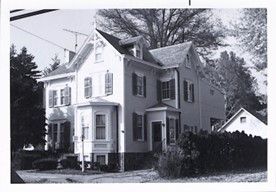
1977 photo of 80 West Bridge Street from NHHS archives.
The
Aaron Burr House was originally a large 2 ½ story Victorian clapboard single family dwelling featuring 3 ornately carved wood gables. It was soon put into use as both a downstairs doctor’s office with an upstairs for the residence of the doctor and family. Three separate building entrances were used for patients, family and neighbors. Physician exam rooms on the first floor were later used by a dentist whose Bunsen burner gas hookup can still be found there. On the second floor is a dining area, living room and kitchen, once a personal residence and in recent decades used by guests of the bed and breakfast. Today, elegant bedrooms (sleeping up to 17) with private baths are located throughout the building, including the basement which is partially above ground. A more modern addition exists on the Northern side of the building.
Second floor views of living room and dining area.
By 1990 Carl Glassman and Nadine Silnutzer owned this bed and breakfast as well as the Wedgwood Inn on Bridge Street. In 2017 ownership was transferred to Lisa Pretecrum who maintains the bed and breakfast to this day. She reports two lots were joined together under the Glassman/Silnutzer ownership. Ms. Pretecrum also owns another New Hope bed and breakfast,
Porches on the Towpath, 20 Fishers Alley, for the last 4 years.
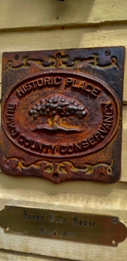
Historic markers on façade.
Many thanks to Lisa Pretecrum for sharing her business and its history with us.
NHHS Board Member and volunteer Tom Lyon as well as volunteers Michele Gunnells, Sandie Mines, and Tom Williams participated in preparing this article.
Beyond The Door

